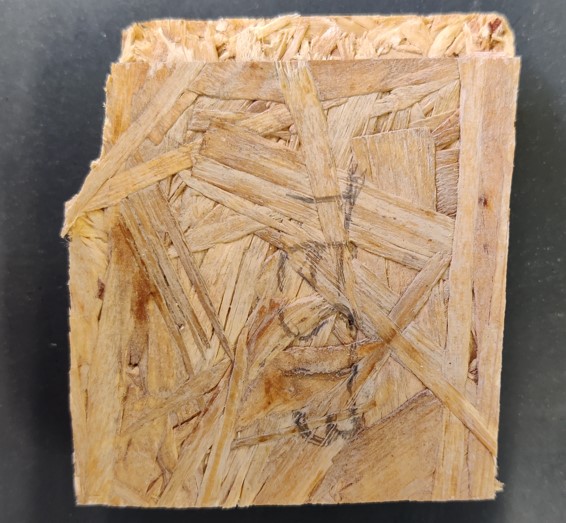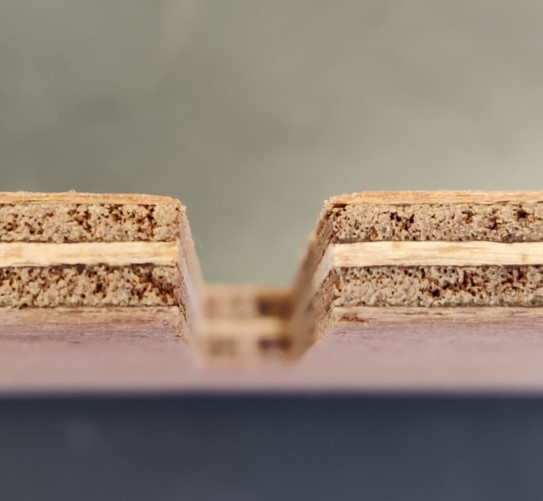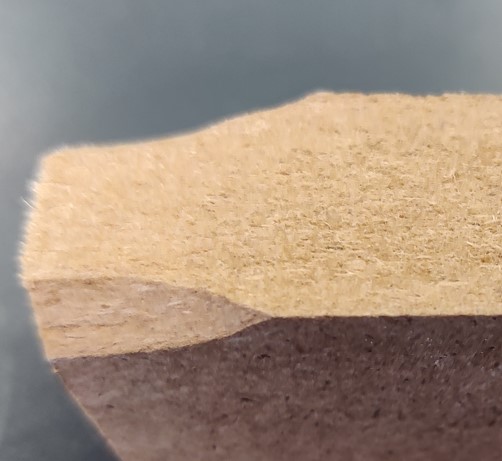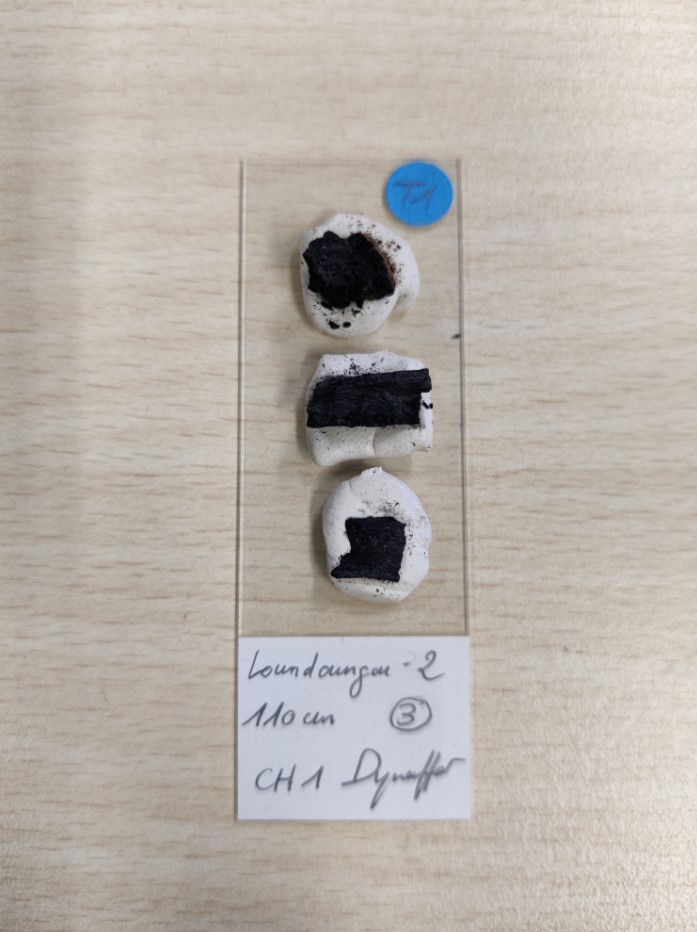Wood Products
Wood is not only processed into sawn boards and beams. Often there is an initial processing into derived wood products, such as paper, fiberboard, plywood, veneer and more. Many of these products contain multiple species of wood and it is also more difficult to make identifications. Therefore, misidentifications are most commonly found there, and false species declarations in the lumber trade are more difficult to refute.

Oriented Strand Board (OSB)
The individual wood chips of OSB are more difficult to identify with classical microtomy, given that a sampling of 0.5-1 cm³ is not possible here. Moreover, the end surface is very small in area, making some anatomical features difficult to estimate.
The SEM can help here, as this method is more suitable for analyzing very small surfaces. However, it remains a problem that larger anatomical features may go unseen. Therefore, this is one of the wood products where the DART-TOMFS can help provide more reliable identification.
Multiplex
As with OSB, the end face is often small in surface area, although this is not so severe as it consists out of thin layers, rather than splinters. Plywood is therefore still suitable for sampling for classical microtomy, even though the recognition of wood anatomical features in the end face is more difficult.


Fibreboard
Unlike OBS and plywood, fibreboard no longer contains oriented elements as they occurred in the original wood. The mix of fibers, vessel elements and tracheids is therefore more difficult to identify anatomically, as information about the structure of the wood is lost.
Paper and cardboard
Here the same problem as with fiberboard arises: the original structure of the wood cannot be recovered. Identifications are difficult because they can only be based on individual fibers, vessel elements and tracheids.


Charcoal
Charcoal is not yet covered by the European Union Timber Regulation (EUTR). Thus, there are few controls on the market, which poses a great risk related to illegal timber trade. It is therefore necessary to establish regulations and be able to make identifications for this purpose. Although the original wood is charred, many anatomical features can still be studied and much of the original structure is still present.
